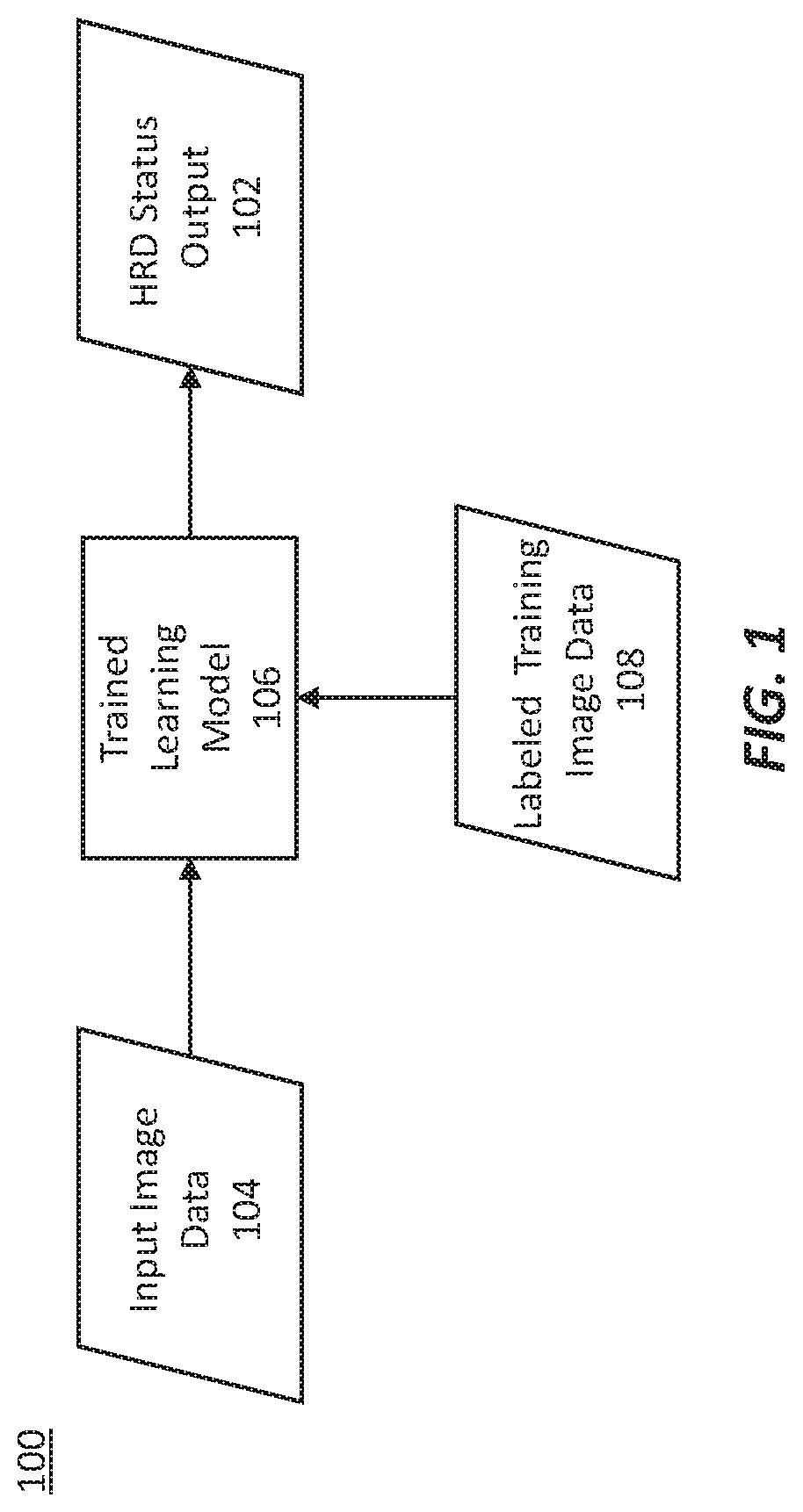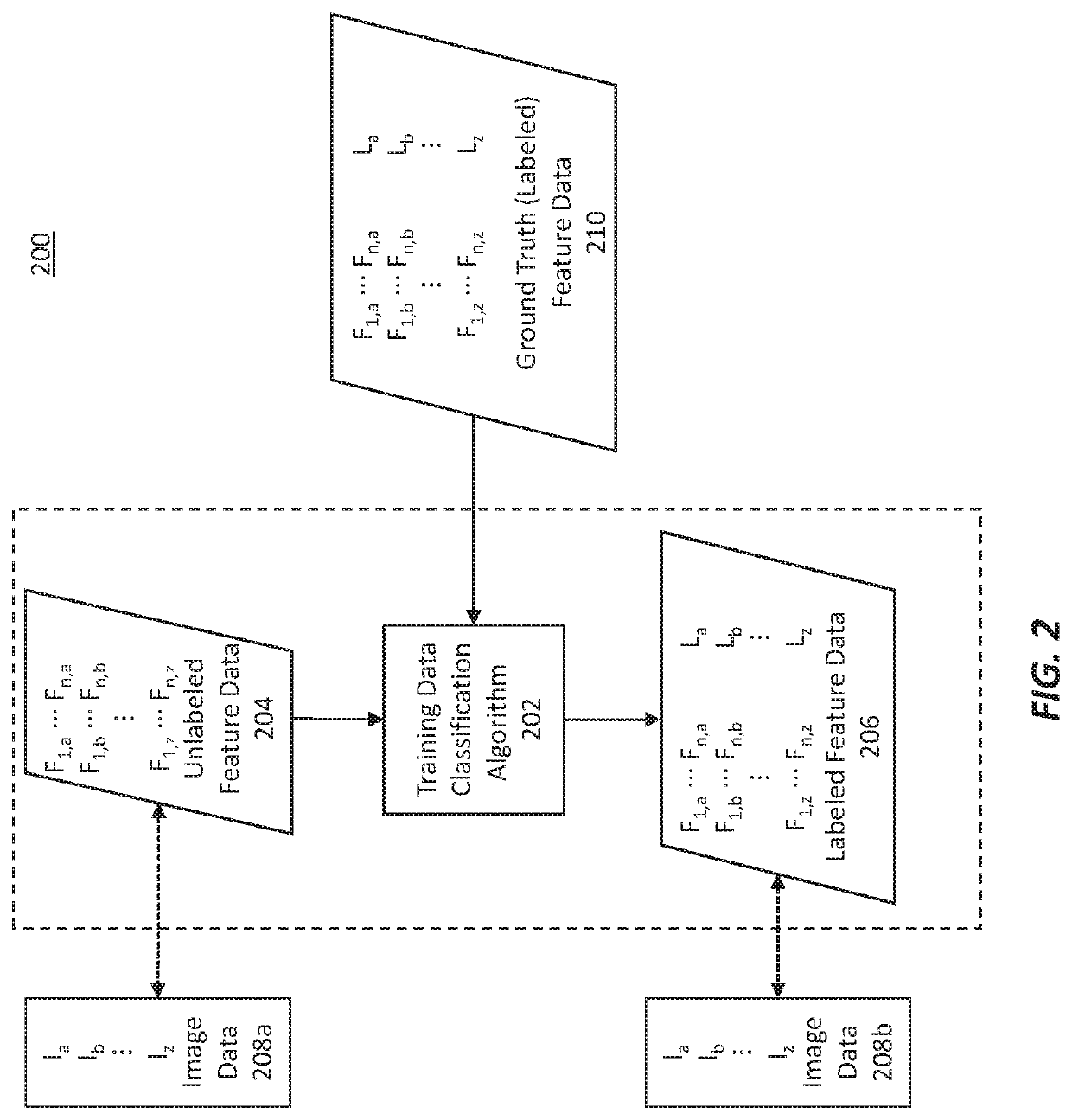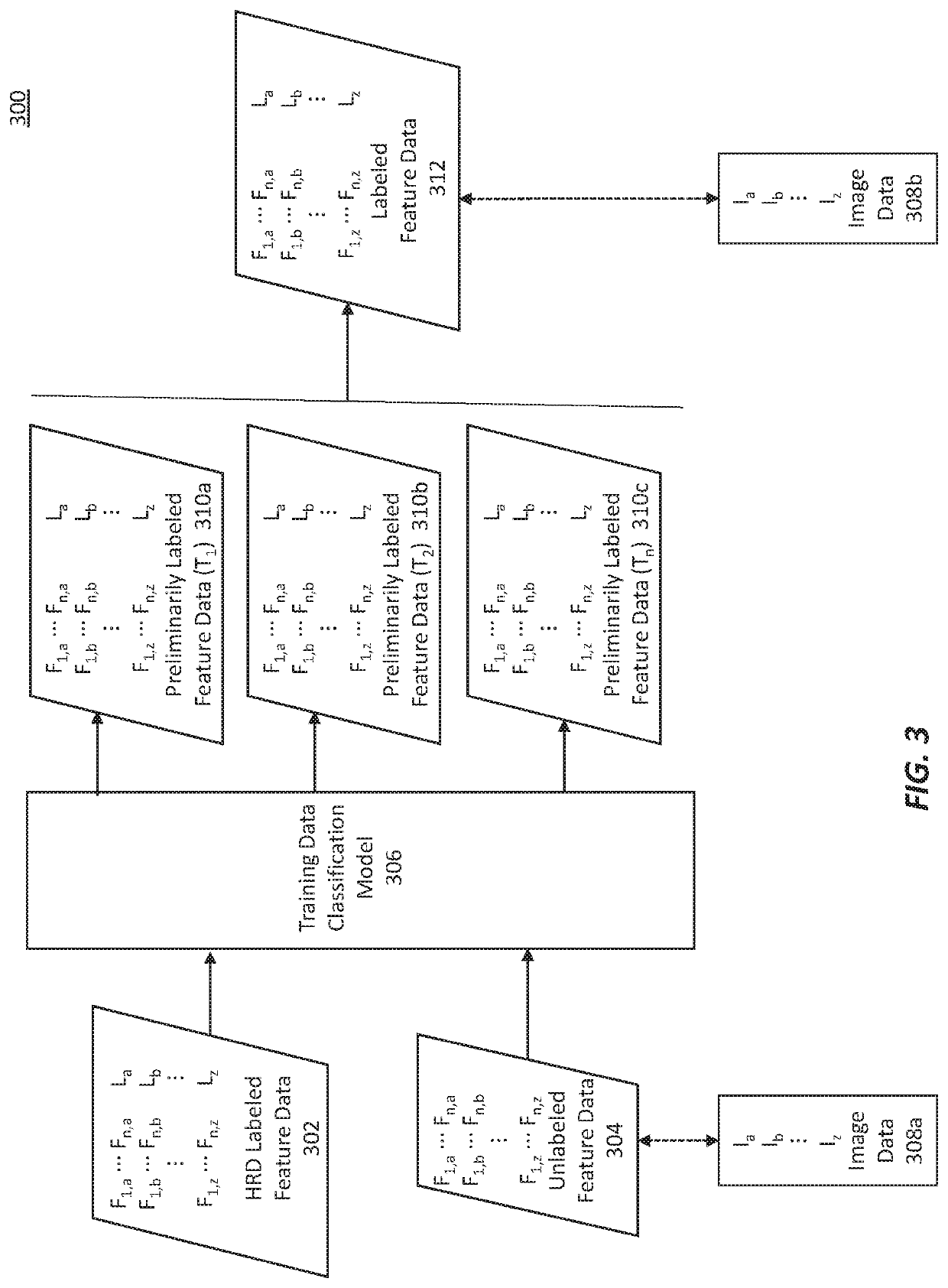Methods for characterizing and treating a cancer type using cancer images
a cancer type and image technology, applied in image enhancement, medical/anatomical pattern recognition, instruments, etc., can solve the problems of increasing the number of patients, the molecular basis of cancer pathology cannot be determined by human observation alone, and the serious public health problem affecting millions of patients worldwid
- Summary
- Abstract
- Description
- Claims
- Application Information
AI Technical Summary
Benefits of technology
Problems solved by technology
Method used
Image
Examples
example 1
ation of Cancer Samples Based on Homologous Recombination Deficiency Status
[0285]Histopathology images (H&E stained) from 866 breast cancer samples with corresponding whole-exon sequencing (WES) data and Affymetrix Genome-Wide Human SNP Array 6.0data were obtained from The Cancer Genome Atlas (TCGA). The dataset can be downloaded from the GDC data portal (https: / / portal.gdc.cancer.gov / ), selecting TCGA-BRCA. Signature 3 score, LST score, NtAI score, LOH score, fLOH score, and HRD score (sum of NtAI, LOH, and LST scores) for all of the samples were determined from the provided values in the TCGA dataset.
[0286]The Signature 3 score in these Examples was from a de-novo mutational signature analysis performed for the composite features of single base substitutions (SBS) and insertions and deletions (indels) in the TCGA-BRCA samples. The mutation count matrix of 96 base substitution types and 20 indel features stratified by the number of inserted or deleted bases up to 10 base-pairs were...
example 2
n of a Training Image Data Using Consensus Labeling
[0298]Example 2 is based on the same TCGA dataset as used in Example 1. Consensus labeling is an extension of the LASSO regression described in Example 1. The 40 samples with BRCA1 and / or BRCA2 bi-allelic deleterious mutations were used to define the homologous recombination deficient group of (ground truth) samples in the full TCGA sample set. For the remaining set of samples of the TCGA sample set, a variety of different thresholds for the HRD score and Signature 3 features were used to define which of them would be the homologous recombination proficient (ground truth) samples (rather than a predetermined threshold of HRD score and Signature 3 score, as in Example 1 (where the thresholds were both set to be less than 20).
[0299]In more detail, for each selected pair of threshold values for HRD score and Signature 3 (herein a “threshold pair”) only those samples in the remaining sample set satisfying the threshold pair are labelled...
example 3
izing Homologous Recombination Deficiency Status
[0311]From the afore-mentioned full (866) TCGA data set, those TCGA samples calculated by the final LASSO regression classification model of Example 2 (consensus labelling) to have a HRD probability of above 0.75 were assigned the label ‘HRD’ and those less than 0.125 were assigned the label ‘HRP’ (as can be understood by reference to FIG. 6). The histology (or histopathology) images (H&E stained)—whole slide images—of these labelled cancer samples (where available in the TCGA dataset, which was not always the case) formed training data for training the Inception v3 image recognition model to recognize HRD status of a cancer from an image (histology slide image) of the cancer. As known in the art, the training data was randomly split 70:30 (in each label class) into a training set and a hold-out set.
[0312]112 breast cancer histology images labeled as homologous recombination deficient and 313 breast cancer histology images labeled as h...
PUM
 Login to View More
Login to View More Abstract
Description
Claims
Application Information
 Login to View More
Login to View More - R&D
- Intellectual Property
- Life Sciences
- Materials
- Tech Scout
- Unparalleled Data Quality
- Higher Quality Content
- 60% Fewer Hallucinations
Browse by: Latest US Patents, China's latest patents, Technical Efficacy Thesaurus, Application Domain, Technology Topic, Popular Technical Reports.
© 2025 PatSnap. All rights reserved.Legal|Privacy policy|Modern Slavery Act Transparency Statement|Sitemap|About US| Contact US: help@patsnap.com



